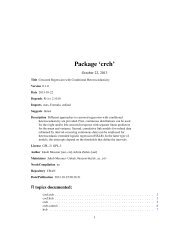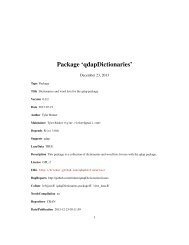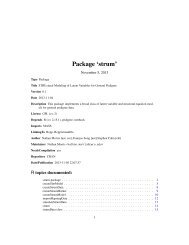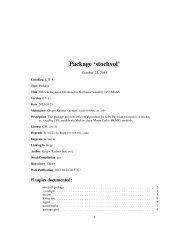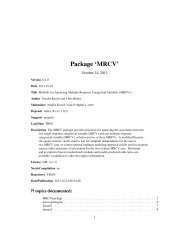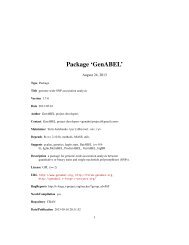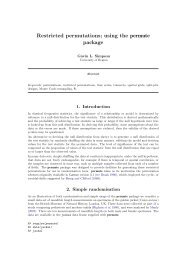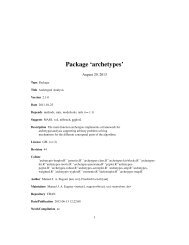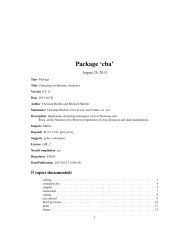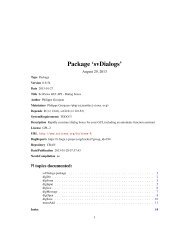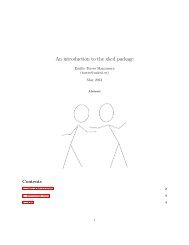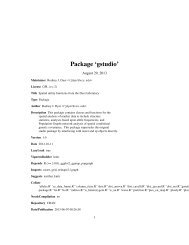Package 'AGD'
Package 'AGD'
Package 'AGD'
Create successful ePaper yourself
Turn your PDF publications into a flip-book with our unique Google optimized e-Paper software.
4 extractLMS<br />
Arguments<br />
Details<br />
Value<br />
fit A gamlss object containing the final fit on transformed age, t.age.<br />
data A data frame containing the original data, with both age and t.age<br />
sex A character vector indicating whether the fit applied to males sex="M" or females<br />
sex="F". The default is sex="M".<br />
grid A character vector indicating the desired age grid. See ageGrid() for possible<br />
options. The default is a grid="classic", a grid of 59 age points.<br />
decimals A numerical vector of length 3 indicating the number of significant digits for<br />
rounding of the L, M and S curves, respectively.<br />
flatAge A scalar indicating the age beyond which the L, M and S values should be constant.<br />
The default (NULL) is not to flatten the curves.<br />
It is crucial that t.age in data correspond to exactly the same age transformation as used to fit the<br />
gamlss object. Age grid values beyond the range of data$age produce NA in the L, M and S values.<br />
Parameter flatAge should be one of the values of the age grid.<br />
A data frame with rows corresponding to time points, and with the following columns: sex,x,L,M,S.<br />
Author(s)<br />
Stef van Buuren, 2010<br />
Examples<br />
#<br />
library(AGD)<br />
boys



